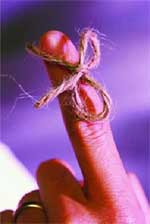OmniMD™ Showcasing Its Urology EMR at
American Urology Association (AUA) Expo 2006
 Practices could eliminate about three patient "no-shows" per day by reminding patients in advance about their appointments. No-show appointments make up about 10% of a practice’s patients, said Divan Da’ve, founder and CEO, OmniMD™, Tarrytown, N.Y. "So just by having a reduction of three or four patients, then the cost savings could be tremendous," Da’ve said. To achieve this, OmniMD™ created the Automated Patient Reminder. Practices could eliminate about three patient "no-shows" per day by reminding patients in advance about their appointments. No-show appointments make up about 10% of a practice’s patients, said Divan Da’ve, founder and CEO, OmniMD™, Tarrytown, N.Y. "So just by having a reduction of three or four patients, then the cost savings could be tremendous," Da’ve said. To achieve this, OmniMD™ created the Automated Patient Reminder.
No-shows not a problem
The Automated Patient Reminder is an interactive voice technology system that automatically calls patients to remind them about appointments.
If a practice purchases the system, it is essentially contracting out the service to OmniMD™ because the practice has nothing else to do with the technology. OmniMD™ maintains the equipment in New York. Da’ve said the phone calls can be custom-made for each practice so that instead of an automated voice, a practice could use its physicians’ voices to provide the message. The phone call also can be made in several languages, including Spanish, Chinese, and Italian. Using doctors’ voices is important because patients know their doctor. "In a time of so [much] unwanted telemarketing coming into our home, it is good to really hear our doctor’s voice say, ‘You have an appointment with me tomorrow,’"
Da’ve said.
However, some of the clinics prefer the automated voice. Practices also can decide if they want the phone call reminders to go out 24 or 48 hours before the appointment. This personalized message is then sent to the patient via phone, fax or email.
Reduce no-shows, increase profit
To drive home his point about saving money with the Patient Reminder, Da’ve estimates that a practice has about 10 no-show patients every day. If a practice makes $75 per patient visit, then it would lose $750 daily.
A practice could assign this task out to an employee. However, Da’ve said this person would need to make about 60 calls every day to remind each patient about appointments.
Doing this in-house would require a staffer to spend about four hours each day making phone calls. (Da’ve estimated each call to last approximately four minutes.)
With the Patient Reminder, there is a 30% reduction of the number of noshow patients, or about three patients per day, Da’ve said. That would translate into savings of $5,380 each month (22 working days), almost $70,000 each year (264 working days), based on estimates of the costs of no-show patients and making the calls in-house.
“With no time wasted on making appointment reminder calls or sending messages, your staff [can focus] on core activities,” he said. Also, about 60% of staff phone calls end up on an answering machine, but the Patient Reminder will keep trying until it reaches a person.
This system will eliminate practices’ potential human-related errors. For example, if the office secretary is responsible for making reminder calls, and she leaves at or the office closes at 5 p.m., it is possible she could have been swamped with other tasks and not have had time to make all the calls, whereas the reminder system is never off the clock and can, therefore, ensure that all the calls are made. |